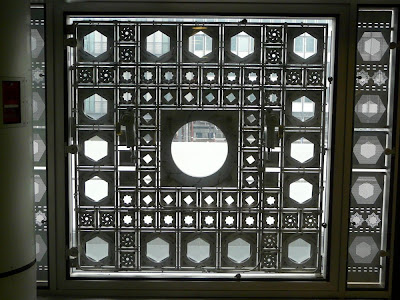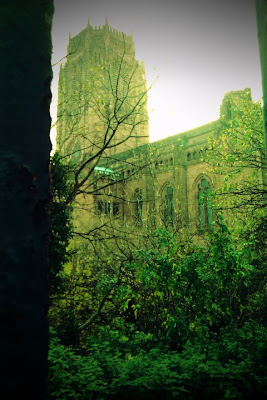The time is very close people... my first term at NTU is nearly over! Its been tough but my gosh have I come a long way.. mainly in design and my appreciation for the design process, but also in developing several of my own little niches/ specialisms id like to study further.
Keep you eyes peeled as I'll be posting up very soon some renders of my final 'lifetime' homes design, and also the bespoke house on the hill in Winchester that Ive been working on...
Thanks
11 Dec 2011
London 2012 - Olympic Recycling
The 2012 Olympic Games pose very exciting times for the United Kingdom both on the track and off it. Frequently Olympic hosts spend millions or in the UK’s case, billions, on developing arenas and the necessary infrastructure in order for the event to run smoothly and often more importantly so that the country is shown in the best way to the billions that tune in to watch the games. But my question was ‘what would we do with an 80,000 seat athletic stadium once the games have finished?’… in many cases the stadium and the money it cost to build is surplus to anyone’s needs.
However, the Olympic Park Legacy Company has worked tirelessly to develop a plan for what happens to our facilities when the games are over. Firstly it should be noted that 98% of the new facilities to be used for the games have been built by British companies, equating to 1,400 contracts and an estimated £6 billion worth of business. Secondly, the main Olympic stadium has been designed as ‘two stadiums in one’, essentially a permanent 25,000 seat stadium with a 55,000 seat skyward extension which can be removed when no longer needed.
The Stadium has been designed as a series of components in order to create an adaptable structure, which facilitates deconstruction for the purposes of post-Games requirements and re-use. For example, all the steel was bolted rather than welded and the roof structure has been designed in such a way that it can be removed or adapted in legacy for use with the smaller stadium.
Similar to my previous post, this innovation sends messages to the world, exhibiting sustainability through recycling and adaptable design
However, the Olympic Park Legacy Company has worked tirelessly to develop a plan for what happens to our facilities when the games are over. Firstly it should be noted that 98% of the new facilities to be used for the games have been built by British companies, equating to 1,400 contracts and an estimated £6 billion worth of business. Secondly, the main Olympic stadium has been designed as ‘two stadiums in one’, essentially a permanent 25,000 seat stadium with a 55,000 seat skyward extension which can be removed when no longer needed.
The Stadium has been designed as a series of components in order to create an adaptable structure, which facilitates deconstruction for the purposes of post-Games requirements and re-use. For example, all the steel was bolted rather than welded and the roof structure has been designed in such a way that it can be removed or adapted in legacy for use with the smaller stadium.
Similar to my previous post, this innovation sends messages to the world, exhibiting sustainability through recycling and adaptable design
25 Nov 2011
A Home for the Homeless by Javier Larraz
Ok.. so this doesnt have much relevance to the previous post.. although I have been working on that.. but this building caught my eye and I had to post it on here. The building was completed in 2010, is located in Navarra, Spain and provides a shelter and food for the homeless.
I love it, and some of the spaces inside are stunning. There is a good use of natural light together with exterior cladding which provides an element of privacy without disturbing the light flow - Something I have been trying to achieve on a residential project @ university.
Please let me know what you think...
I love it, and some of the spaces inside are stunning. There is a good use of natural light together with exterior cladding which provides an element of privacy without disturbing the light flow - Something I have been trying to achieve on a residential project @ university.
Please let me know what you think...
24 Nov 2011
Old Vs New
Hello again, not posted in a few days.. been soooo busy with university work! However, we have been briefed of a project that we are due to start after the Christmas break... its goes something along the lines of us choosing a two buildings from different eras with which we then compare a detail to see how materials, technology and knowledge have developed over the years. Reference should be made also to building regs and then the effect they would have had on the older of the buildings.
I have posted a selection of classic buildings that I really like below. It would be interesting to compare two building perhaps by the same architect, preferably who is still 'alive and designing' today to see how his thought process and strategy towards a similar detail has altered over the years... Please post your comments and thoughts.. :)
The Institute du monde Arabe, by Jean Nouvel. Completed 1987.
Museum of Fine Arts, Houston. By Mies Van Der Rohe. Final part completed 1974.
I know Mies isnt around today but the reason why I chose this building of his to post was because his work here was a modern addition to a neoclassical building built in 1924. Mies's modern style juxtaposed with the old building is something we are seeing more and more of today, even at NTU with the recent refurbishment of Arkwright.
John Hancock Centre, Chicago. By Bruce Graham and Fazlur Khan (of Skidmore, Owens and Merrill). Completed 1970.
One of my favourite buildings in Chicago and one I used to admire everyday on my journey into college at IIT. Cutting edge engineering for its time.. but would it be built that way today?
Marina City (Corn on the Cob buildings!), Chicago. By Bertrand Goldberg. Completed 1964.
Over the next few days I shall be expanding on this collection, before looking in to modern buildings that are shaping the future of construction and architectural technology.
I have posted a selection of classic buildings that I really like below. It would be interesting to compare two building perhaps by the same architect, preferably who is still 'alive and designing' today to see how his thought process and strategy towards a similar detail has altered over the years... Please post your comments and thoughts.. :)
The Institute du monde Arabe, by Jean Nouvel. Completed 1987.
Museum of Fine Arts, Houston. By Mies Van Der Rohe. Final part completed 1974.
I know Mies isnt around today but the reason why I chose this building of his to post was because his work here was a modern addition to a neoclassical building built in 1924. Mies's modern style juxtaposed with the old building is something we are seeing more and more of today, even at NTU with the recent refurbishment of Arkwright.
John Hancock Centre, Chicago. By Bruce Graham and Fazlur Khan (of Skidmore, Owens and Merrill). Completed 1970.
One of my favourite buildings in Chicago and one I used to admire everyday on my journey into college at IIT. Cutting edge engineering for its time.. but would it be built that way today?
Marina City (Corn on the Cob buildings!), Chicago. By Bertrand Goldberg. Completed 1964.
Over the next few days I shall be expanding on this collection, before looking in to modern buildings that are shaping the future of construction and architectural technology.
19 Nov 2011
Yacht Inspired Apartments
Just a quick one this time... saw this a thought it was a boat at first! I do like it though, the attention to details is fabulous. Looks like it belongs in Monaco... although it does sit nicely in Sydney.
18 Nov 2011
Liverpool Field Trip
So I have mentioned it a couple of times this week, a long with apologies for my poor camera phone photos... So with thanks to Constantine Michael, a first year on the BA Interior Architecture course at NTU, here is a selection of what we got to see whilst on our field trip.
Starting in Liverpool with the Metropolitan Cathedral.
The space inside this mammoth cathedral was beautiful. Natural light flooded in, though outside it was a typical English grey sky. Appreciation also has to be shown towards those who built the building, simply brilliant.
Then it was the Liverpool Cathedral. The scale of this building is hard to explain, and even with pictures its difficult to really get across how big it was. Unfortunately photos inside were limited due to a memorial taking place for four-time Grand National winning trainer, Ginger McCain.
And then on to Crosby Beach.
Before finally reaching Salford and the Imperial War Museum North.
And just a few of the Media City footbridge.
Again, a big thank you to Constantine Michaels for the photos...
Starting in Liverpool with the Metropolitan Cathedral.
The space inside this mammoth cathedral was beautiful. Natural light flooded in, though outside it was a typical English grey sky. Appreciation also has to be shown towards those who built the building, simply brilliant.
Then it was the Liverpool Cathedral. The scale of this building is hard to explain, and even with pictures its difficult to really get across how big it was. Unfortunately photos inside were limited due to a memorial taking place for four-time Grand National winning trainer, Ginger McCain.
And then on to Crosby Beach.
Before finally reaching Salford and the Imperial War Museum North.
And just a few of the Media City footbridge.
Again, a big thank you to Constantine Michaels for the photos...
Subscribe to:
Comments (Atom)



















































